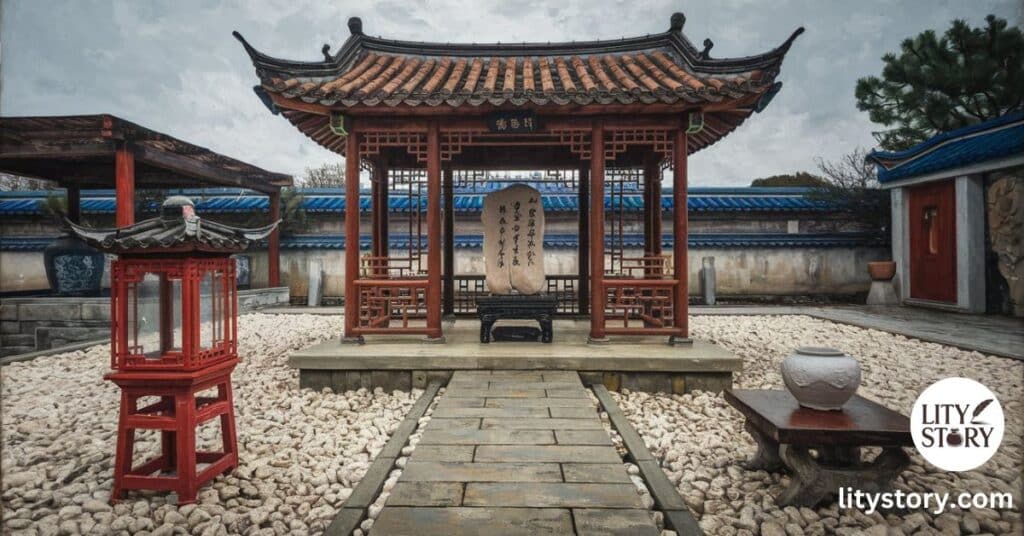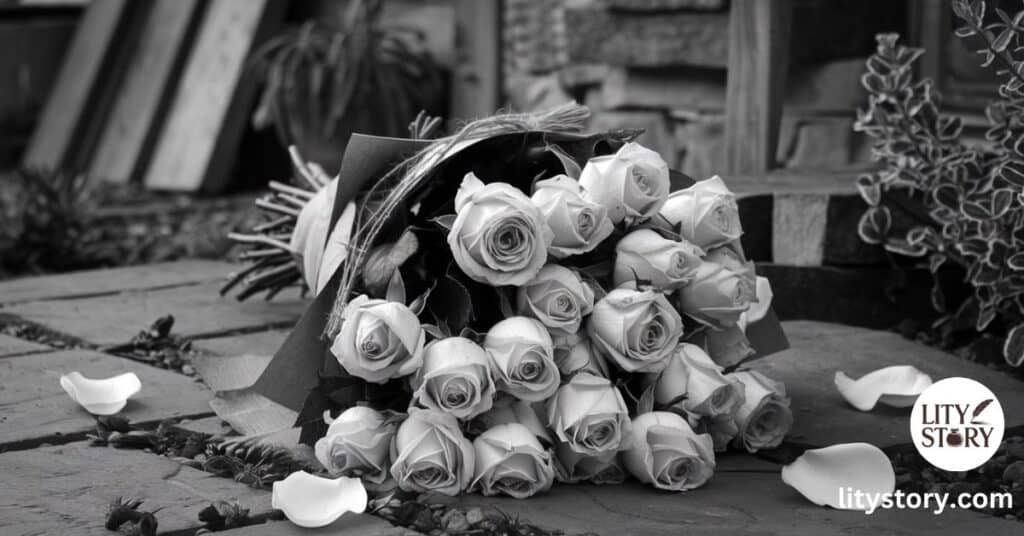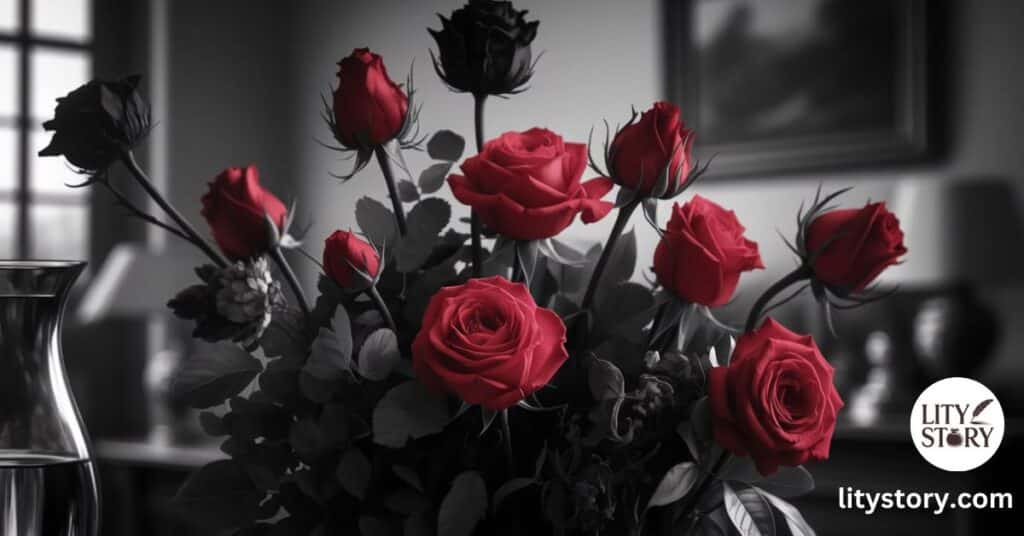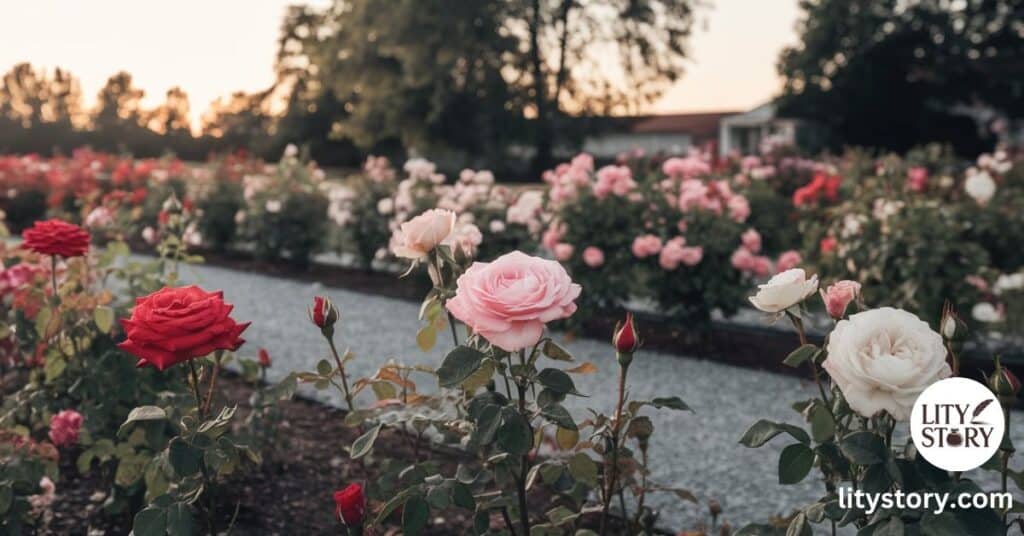Rose Poems have long celebrated the dual nature of roses—combining fragile beauty with hidden strength, expressed through delicate petals and sharp thorns. From ancient times to modern literature, poets have turned to the rose as a powerful symbol to explore love, life, death, and everything in between. Whether signifying passion or sorrow, innocence or experience, the rose’s versatile symbolism makes it a perennial favorite in literature across cultures and eras.
This article will explore the cultural, literary, and symbolic significance of rose poems. Along the way, you’ll find original poems that bring the beauty and strength of roses to life.
Cultural Significance of Roses in Poetry

Roses are more than just flowers; they are imbued with deep cultural meanings and have inspired poets across civilizations. Whether as a symbol of love, purity, secrecy, or death, the rose has played an essential role in literature for centuries.
The Rose in Ancient Literature
Roses have been revered since antiquity, especially in Greek and Roman cultures. In Greek mythology, roses were closely associated with the goddess Aphrodite, symbolizing both the purity of love and the pain of loss.
Original Poem – Aphrodite’s Rose Born from love, a rose so pure,
In Aphrodite’s hands secure,
Petals are soft, yet thorns conceal,
A love that wounds, a heart to heal.
In Rose Poems from Roman culture, roses symbolized secrecy and were often used during private gatherings. The phrase sub rosa means “under the rose,” representing confidential discussions or hidden emotions. This symbolism was later adopted into Christian culture, where roses were connected to divine love and the Virgin Mary.
Roses in Medieval and Renaissance Poetry

In Rose Poems from the Middle Ages, the rose frequently appeared in Christian symbolism, particularly representing the Virgin Mary. The flower’s association with purity and chastity became a recurring theme in religious poetry.
During the Renaissance, the rose reclaimed its status as a symbol of both romantic and erotic love. Poets like William Shakespeare and Edmund Spenser wrote extensively about the rose’s beauty, often using it as a metaphor for fleeting youth and the passage of time.
Original Poem – Rose of Youth A rose in bloom, a fleeting sight,
Its vibrant hues, bathed in light,
Yet petals fall, as time doth show,
That beauty fades, and all must go.
Shakespeare’s famous line from “Romeo and Juliet” — “A rose by any other name would smell as sweet” — captures the essence of the flower’s symbolism: love transcending all boundaries. Spenser, on the other hand, emphasized the rose as a symbol of virtue and moral purity in “The Faerie Queene.”
The Rose in Eastern Literature

In Persian poetry, the rose often represents divine beauty and spiritual longing. Great poets like Rumi and Hafiz frequently used the rose to symbolize the soul’s yearning for union with the divine. The contrast between the rose’s beauty and its brief lifespan reflects the fleeting nature of worldly pleasures.
Original Poem – Rumi’s Rose In the Garden of my soul,
A rose of love begins to grow,
Its petals soft, its fragrance sweet,
Yet time reminds us, all things retreat.
In Rose Poems within Chinese poetry, the rose is less associated with romance and more with tranquility and natural beauty. The delicate balance between the rose’s petals and thorns often symbolizes the balance between yin and yang, or the harmony of opposites in life.
The Rose in Modern Poetry

As time progressed, modern poets began to use roses in Rose Poems in more subversive and ironic ways. While classical poetry revered the rose’s beauty, modern poets like Sylvia Plath and Pablo Neruda used roses to explore themes of disillusionment, suffering, and inner conflict.
Sylvia Plath’s poem “The Munich Mannequins” contrasts the natural beauty of roses with the artificiality of modern life, using the flower as a symbol in Rose Poems of inner conflict and unattainable perfection.
Original Poem – Rose of Concrete A rose that grew from hardened earth,
Its petals are stained by man-made mirth,
Yet through the cracks, it finds a way,
To bloom beneath the steel and gray.
In contrast, Pablo Neruda frequently used the rose in Rose Poems as a metaphor for the intensity of human emotions, from the euphoria of love to the depths of sorrow. His famous “Ode to the Rose” explores how a single flower can evoke both joy and melancholy.
Original Poem – Neruda’s Bloom Oh rose, you burn with silent fire,
A symbol of our heart’s desire,
Your petals are soft, yet thorns remind you,
That beauty wounds the seeking mind.
The Symbolism of Roses in Poetry

Roses as Symbols of Love
One of the most enduring associations with roses in Rose Poems is love. Throughout history, poets have used roses to symbolize the multifaceted nature of love—its beauty, passion, vulnerability, and pain. Whether representing new love, unrequited love, or lost love, the rose’s ability to evoke deep emotions has made it a favorite metaphor in romantic poetry.
Original Poem – Love’s Rose Within the bloom of love’s embrace,
A tender rose, a sacred place,
Yet as it grows, the thorns do show,
That love is more than we may know.
Roses frequently appear in Rose Poems by Shakespeare, as well as in the works of Elizabeth Barrett Browning and John Keats. In these poems, roses often symbolize the complexity of love and its fleeting nature.
Roses as Symbols of Beauty

The rose is also a symbol of beauty in poetry, representing not only physical attractiveness but also the deeper, more ethereal qualities of inner beauty. The rose’s delicate petals and vibrant colors have made it a universal symbol of nature’s splendor.
Original Poem – Beauty’s Rose No flower shines with purer grace,
Than roses in their sacred place,
Their vibrant hues, a fleeting sight,
That blesses the heart with pure delight.
Many poets, including William Blake and Christina Rossetti, have used the rose in Rose Poems to explore the idea of beauty in both its physical and spiritual forms. The rose’s transient beauty serves as a reminder of life’s impermanence.
Roses as Symbols of Life and Death

The juxtaposition of the rose’s beauty and its thorns makes it an ideal metaphor for the duality of life and death. In many poems, the rose represents the fleeting nature of life and the inevitability of death. Just as a rose blooms and fades, so too does human life.
Original Poem – Rose of Life The Rose That Blooms with morning dew,
Must fade beneath the skies of blue,
Yet in its petals lies the key,
That life’s brief breath brings clarity.
Emily Dickinson frequently used the rose as a symbol of death in her poetry, often exploring the themes of mortality and the afterlife through the flower’s brief lifespan.
Roses as Symbols of Strength and Resilience

Though roses are often celebrated for their beauty, Rose Poems also highlight their thorns as a reminder of resilience. This duality has led poets to use the rose as a symbol of inner strength, particularly in the face of adversity.
Original Poem – Thorned Beauty Beneath the bloom, a strength concealed,
A thorn that never shall be healed,
Yet in its pain, the rose does grow,
A symbol of what we must know.
In modern poetry, the rose has become a symbol of survival and endurance, as seen in Tupac Shakur’s famous poem “The Rose That Grew from Concrete.” In this poem, the rose symbolizes overcoming hardship and finding beauty in unlikely places.
Roses in Nature: From Dawn to Dusk

Roses are not only symbols of emotions in Rose Poems, but also of the natural world itself. Poets have long been inspired by the way roses interact with the changing light of day, from the first rays of dawn to the fading twilight. The cycle of a rose’s life, much like the cycle of a day, mirrors the journey of human existence.
Original Poem – Dawn’s Rose At dawn, the rose begins to rise,
Beneath the blush of newborn skies,
Its petals soft, a fragrant sigh,
That welcomes morning with a cry.
Original Poem – Dusk’s Rose And as the evening shadows fall,
The rose lets out its final call,
Its petals fold, its fragrance fades,
A solemn bow to twilight’s shades.
How to Write Rose-Themed Poetry

Writing rose-themed poetry can be both a rewarding and challenging experience. The key to success lies in using the symbolism of the rose effectively, while also bringing your unique voice and perspective to the poem.
1. Choose the Right Type of Rose Symbolism
Decide what aspect of the rose you want to focus on in your poem. Are you writing about love, beauty, strength, or the duality of life? Each
of these themes can lead to different emotional resonances.
Original Poem – Rose of Emotion This rose shall speak of love and pain,
A tender heart wrapped in the rain,
For in its bloom, both joy and grief,
Reflect the human spirit’s brief.
2. Use Vivid Imagery
To bring your Rose Poems to life, use vivid imagery that engages the senses. Describe the rose’s color, scent, and texture to create a more immersive experience for your readers.
Original Poem – Crimson Bloom A crimson rose, with a velvet touch,
Its fragrance is sweet, it means so much,
In gardens green, its beauty glows,
A memory of love that flows.
3. Experiment with Form and Structure
Poetry can take many forms, from traditional sonnets to free verse. Experiment with different structures to find what best expresses your feelings about the rose.
Original Poem – Free Verse Rose In the quiet of the night,
The rose whispers secrets to the moon,
Each petal is a story,
Each thorn is a lesson learned.
4. Draw on Personal Experience
Use your own experiences to give your rose poem depth and authenticity. Reflect on moments when roses have been present in your life — whether during moments of love, loss, or celebration.
Original Poem – A Personal Bloom I found you at a garden fair,
A rose that danced upon the air,
With every laugh, your petals spread,
Yet now, in silence, words unsaid.
5. Revise and Edit
Once you’ve drafted your rose poem, take time to revise and edit. Look for ways to enhance the imagery, tighten the language, and ensure that your message resonates clearly.
Original Poem – Refining the Rose The rose must grow, the thorns must prickle,
In love’s embrace, our hearts will tickle,
Yet through the pain, we learn to see,
That every rose blooms beautifully.
Conclusion
Roses have captivated poets for centuries, serving as potent symbols in Rose Poems of love, beauty, resilience, and the intricate tapestry of human emotions. Their dual nature—combining beauty and pain, life and death—offers a profound metaphor for the human experience. Whether used to express romantic passion or to explore themes of loss and suffering, roses continue to inspire and evoke powerful feelings in both writers and readers.
As you embark on your journey of writing rose-themed poetry, remember the rich history and symbolism that this flower carries. Let your voice and experiences shape your words, and don’t hesitate to explore the multifaceted meanings of roses in your poems.

Litystoyr is the creative mind behind Litystory, a blog dedicated to helping readers navigate the complexities of canceling and activating various subscriptions. With clear, actionable advice, Litystoyr simplifies the process for users looking for easy solutions to subscription management and more.








